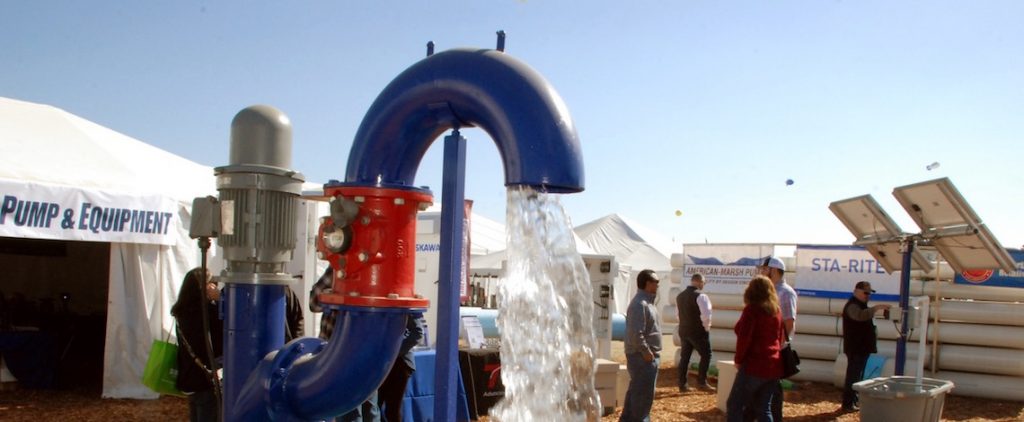
File photo
Written by Edward Smith
Jim Berekoff of Berekoff Farms says he has about three to four years’ worth of water left beneath his Kerman farm without any recharge. He said he’s scared to see where the water table is at now, but last he checked he was at 95 feet below the ground. Being in the Fresno Irrigation District, he does get some surface water allocation from the Friant-Kern Canal, but that’s all been going to crops.
As rules under the Sustainable Groundwater Management Act begin to roll out, California law says farmers will soon be limited to pumping out only as much as they put in.
But with uncertainty surrounding rainfall and water allocations near zero, their ability to comply with SGMA is severely hampered.
“You have to put in the amount you pump,” says Berekoff. “And without any surface water, you can’t put any back in.”
Even as harvests wind down, growers are already planning for next year. At top of mind for farmers is the 0% or near-zero percent allocation they received in many parts of the Valley.
Being semi-retired, Berekoff leases out most of his land now. But one of the decisions he made recently with his growers was to swap out his grapes for blueberries and almonds.
While grapes are less water-intensive than blueberries and almonds, the raisins he was growing just weren’t yielding enough to make them profitable. Central Valley raisins were at one time premium in the world. But a focus on bulk exports rather than consumer packaging forced American raisins to compete with other countries.
He would spend $150 a day for a laborer whereas in another country, that same person might only make $2. Raisins made it difficult to compete.
As land fallowing becomes more necessary, especially in Western Fresno County where allocations this year sit at 0%, growers are having to reconsider what can make their land profitable.
Daniel Hartwig, president of the Fresno County Farm Bureau, said prices on ag commodities have been going up as land is taken out of production to conserve what little water they are getting.
But with 0% water coming from other parts of the state, even the most lucrative crops can’t turn a profit.
“At the end of the day, prices could be a million dollars a ton, but that doesn’t help if you physically don’t have the water to grow it,” Hartwig said.
Hartwig said one of the easier things that can be done is to help facilitate water transfers. Water was going for upwards of $2,000 an acre-foot this year. And growers were getting what they could to keep permanent plantings alive.
The drought declaration helps water transfers bypass some environmental impact reviews, but it took several months for the drought to be declared this year.
Garlic will begin to be planted in the next couple weeks as will some onions and winter lettuce. Growers are taking a “wait-and-see” approach to find out what water will be available.
Ryan Jacobsen, CEO of the Fresno County Farm Bureau, said he expects a serious crunch in fall plantings.
The rise of pistachios has been driven by water demand, says Jacobsen. Almonds are far less forgiving when it comes to dry years.
“On years when there isn’t as much water you can throttle them back,” Jacobsen said of pistachios. “It affects the production in the on-and-off years, but the tree does survive.”
In western Fresno County, growers are adapting to SGMA rules. Westlands Water District will begin installing district water meters on wells that can be viewed remotely, said Kiti Campbell, supervisor of resources with the district.
It will be a number of years before they are fully up and running, but this is another step in their groundwater sustainability plan. The California Department of Water Resources is currently reviewing the plan all water districts are required to submit.
Campbell said the goal for 2022 is to be balanced on an aggregate level — meaning across more than 600,000 acres of farmland, the amount of water being withdrawn is equal to the amount of water being recharged.
Over the years, 90,000 acres of farmland have been fallowed, said Campbell, and that should bring them in balance. The district could pump as much as 700,000 acre-feet of water and they are not projected to withdraw that much this year.
For Berekoff, he says there are real concerns about wells going dry.
“We can’t get that water table up if we keep pumping it out,” he said.







